#save our wildlife
Text

#atwa#nature#natures beauty#save our planet#save our wildlife#stop tearing down#save the bees#save the trees
8 notes
·
View notes
Text

3 notes
·
View notes
Text
'You should never prioritize the lives of animals over the lives of people-' actually I view all lives as inherently equal as the baseline of my philosophy because human and animal lives are inseperable and codependant. The life of the bee and the wild wasp and the mosquito and the rattlesnake and the coyote and the couger you damn are all parts of the turning machine that sustain the growth of the food you eat and the health of the land you live on. You are dependant on them to survive and they are dependant on you to stop them from being slaughtered by power-hungry capitalists who see them as nothing more than pests to be eradicated. Their lives are equal to yours in worth because we are both componants of an ecosystem, cells in a great living body, and if you destroy one then the other will die. Do you understand.
#this does NOT extend to people treating poc worse than dogs btw. this is about prioritizing wildlife#bc I keep getting told that I should focus more on saving human lives than ecological restoration and countering extinction#and it makes me so mad#we have to MAKE OUR HOME VIABLE TO LIVE IN TO SAVE OURSELVES
44 notes
·
View notes
Text
I need Americans to stop weighing in on the UKs indoor vs outdoor cat debate until they read up on our biodiversity crisis and learn exactly why our wildlife decline is so serious (spoiler: it's not the cats)
#im all for advocating for indoor cats but americans please listen to us when we tell you its not what will save our wildlife. please#except in scotland with scottish wildcats. if youre gonna go hard on us for indoor cats focus on that. please#the UKs situation is entirely different to america and wont listen when we tell them this but they love to talk as if we're stupid#hold our government accountable. hold our landowners accountable. please#13% woodland cover left in the uk and only 25% is ancient. 71% farmland cover and agriculture is so intensive it cannot sustain our wildlife#the government is polluting our waters. pesticides are polluting our waters#THAT is why our wildlife is dying#cats have been here for 1600 years and the wildlife decrease has only been significant within the last 100 or so. 41% since 1970#it aint the cats. i know its hard for americans to accept. but listen to us. it aint the cats#would it help? yes of course and thats why im still for it. is it going to solve our biodiversity crisis? absolutely not and it never will
10 notes
·
View notes
Photo
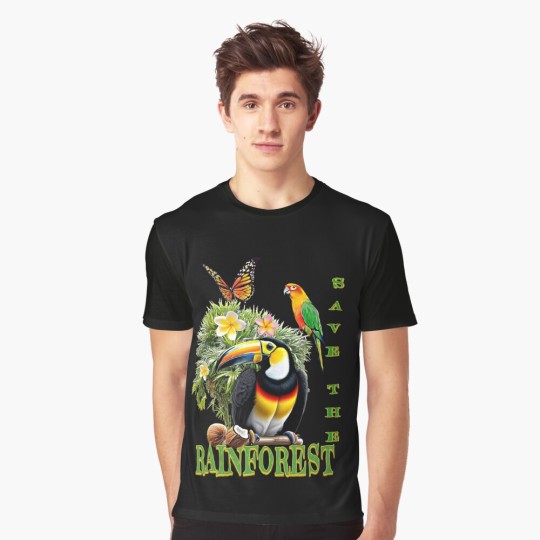




(via "Forest Preservation" Magnet for Sale by TruGrowth)
#findyourthing#redbubble#wildlife#nature#rainforest#save the rainforest#woods#greenearth#protect our forests#save our planet#art#graphicsdesign#artists on tumblr#black artists on tumblr
3 notes
·
View notes
Text

My Wandering Albatross: A reminder that the world is a big and beautiful place.
source
#art#wandering albatross#albatross#nature#birds#wildlife#canvas prints#save our species#freedom#yogamat
2 notes
·
View notes
Text
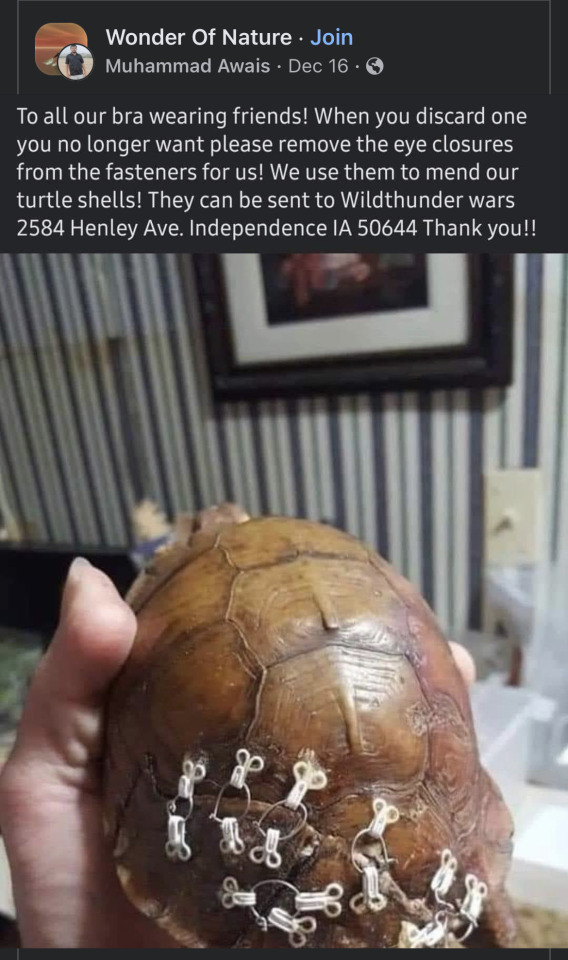
#little moth's page#save the damn turtles#trans masc ppl#we can use our old bras for good#more good#bras you cant give to someone else because its broken?#just give the clasps to a wildlife rehab so they can save a turtle!
17 notes
·
View notes
Text
Preserving Our Natural Heritage: Tips for Saving Wildlife
Shaina Tranquilino
November 19, 2023
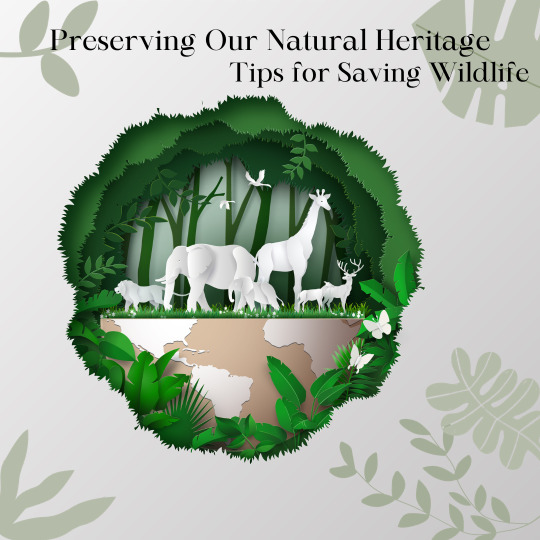
The world we live in is incredibly diverse, with an abundance of incredible wildlife species that captivate our imaginations and contribute to the delicate balance of ecosystems. However, many of these creatures are facing significant threats due to habitat loss, climate change, pollution, and poaching. As responsible stewards of this planet, it is crucial for us to take action and play our part in conserving and protecting wildlife. In this blog post, we will discuss some effective ways to save wildlife.
1. Support Conservation Organizations:
Numerous organizations around the globe work tirelessly towards preserving biodiversity and safeguarding endangered species. By supporting reputable conservation groups through donations or volunteering opportunities, you can contribute directly to their efforts. Examples include World Wildlife Fund (WWF), International Union for Conservation of Nature (IUCN), and local initiatives such as community-based conservation programs.
2. Promote Sustainable Living:
Our individual actions have a collective impact on the health of our environment. Embracing a sustainable lifestyle can help minimize damage to ecosystems and preserve habitats for various wildlife species. Reduce your carbon footprint by using energy-efficient appliances, driving less or opting for public transport, recycling and composting waste materials, and choosing eco-friendly products whenever possible.
3. Preserve Natural Habitats:
Habitat destruction remains one of the leading causes of declining wildlife populations worldwide. Take steps to protect natural habitats within your surroundings – whether it be forests, wetlands, or grasslands – by participating in habitat restoration projects or advocating for the preservation of green spaces in your community.
4. Avoid Single-Use Plastic:
Plastic pollution poses a severe threat to marine life and terrestrial animals alike. Refusing single-use plastics and packaging can significantly reduce pollution levels in oceans and landfills. Instead, opt for reusable alternatives such as stainless steel water bottles.
5. Educate and Raise Awareness:
Increasing awareness about the importance of wildlife conservation is essential for long-term change. Share your knowledge with others, engage in discussions, and participate in educational events. Encourage friends, family, and colleagues to watch documentaries or read books on wildlife preservation. By spreading information and inspiring others, we can create a ripple effect that contributes to saving wildlife.
6. Support Sustainable Tourism:
When travelling, choose responsible tourism operators who prioritize wildlife conservation and minimize their environmental impact. Avoid activities that exploit animals or disturb their natural habitats. Instead, opt for eco-tours that prioritize education and respect for wildlife while contributing to local economies in sustainable ways.
7. Be Mindful of Wildlife Products:
Avoid purchasing products made from endangered plants or animals such as ivory, fur, or exotic species kept as pets. The illegal wildlife trade is a significant contributor to species decline globally; by refusing to support this industry, you help protect vulnerable creatures.
Preserving our planet's biodiversity is both a collective responsibility and an urgent necessity. By incorporating these practices into our daily lives, we can make a tangible difference in the fight to save wildlife populations worldwide. Remember that every small action counts! Let us unite in safeguarding the incredible diversity of life on Earth for future generations to enjoy and appreciate.
#preserving nature#saving wildlife#protecting our heritage#conservation tips#biodiversity matters#sustainable living#wildlife protection#nature lovers unite#environmental awareness#save the animals#go green for wildlife#preserve and protect
1 note
·
View note
Text
I've been seeing a lot of Discourse around outdoor cats that talks past one of the biggest problems addressing community cats/outdoor working cats so I thought I'd chime in with my two cents.
Many arguments I see just... don't think about the cats at all? Or don't consider the logistics of actually addressing the feral cat problem in a humane way. It's always about how outdoor cats shouldn't be outdoors, which is neither realistic nor helpful.
I used to volunteer at an municipal animal shelter in the USA that had a TNR program (Trap, Neuter, Return) and also adopted out community cats to local farms and businesses. Here's my side of the story.
"Your cat doesn't need to be outside" -- Yes, correct. Your domesticated (non-feral) house cat does not need to go outside at all. They can have a fully actualized life safely indoors. When I see this argument, proponents of indoor only cats are correct in most or all their arguments regarding this.
"Outdoor cats are the largest invasive species in the world, and decimate bird populations." -- This is also correct, and part of the reason why you can help by bringing your house cat indoors. Cats are the largest invasive species. Spay and Neuter your cats, bring them inside, and socialize them so they don't become feral.
"TNR doesn't work." -- False. Whether we like it or not, feral cats exist. We have two methods by which we can address the feral cat population -- decimating them (humanely euthanizing the whole colony) or TNR. For a long time, euthanasia was the preferred way to address the feral cat problem. Afterall, if the cats aren't there, doesn't that save the local wildlife population?
Except that we found, studying these colonies, that when a colony is wiped out, the cats of another colony will spread into their territory and continue to have kittens and the population of feral cats is neither controlled nor diminished.
Hence, TNR. What we found performing TNR on cat colonies was that this controlled the population of the colonies, allowing them to stay in their territory, which kept other colonies from spreading (especially colonies we hadn't performed TNR on yet). We at the shelter felt this was the most humane way to control the feral cat population and safely deflate their existence without dealing with the population blooms that euthanasia caused.
"What about kittens?" -- Kittens from these colonies were brought into the shelter, socialized, and fostered out until they could be adopted. Some of these semi-feral kittens needed special homes to be adopted into, but this was the best quality of life for these cats.
"What about cats that get missed during TNR?" -- We would return to the colony several times over a period of several years to perform TNR on the same colony. We mark cats that have been neutered by clipping their ear (this is done humanely, but is the most reliable way to tell if a cat has been neutered so the poor thing doesn't have to have surgery 3-4 times in their life). Also, during the TNR process the cats would be vaccinated to ensure disease did not spread from the colony (i.e. rabies). Still, even getting 60% of the colony TNR'd would dramatically reduce the number of kittens being added to the colony each year. This controlled the population by allowing the territory to naturally deflate in size over time, buying us time to address the larger feral cat problem.
"What if the colony was in an unsafe location?" -- There were two ways we addressed unsafe colony locations -- remember, we know that when the colony is removed, a new colony will move into its place, so we tried not to move the colony unless we really felt the cats or the public was unsafe -- one was to move the whole colony to a new location. Preferably someplace like a warehouse where we have an agreement with the owners of the warehouse. Some of the cats were even relocated to shelter grounds as our community cats. If the colony was small enough we would bring them into our Feral Cats room and adopt them out as community cats.
"What is a community cat?" -- The way the program worked, was that anyone who needed a working cat could apply to the program. These were often rural farmers or businesses with warehouses that needed rodent protection. We trained the farmers and businesses on how to acclimatize the cats to their new home, and as part of the agreement, they had to care for the cats (veterinary care, vaccinations, food and water). This gave businesses and farms an alternative to expensive and environmentally unfriendly rodent control, and also gave these feral cats good places to live out their natural lives.
"Can't you just adopt out feral cats?" -- No. Cats that have not been socialized around humans as kittens, or who have several generations of feral cat in them could not interact with humans in a way that did not cause them undue stress. This was not a humane way to handle feral cats. However, when a cat was brought into the feral cat room, they would be monitored for up to a week. If the cat displayed signs of being semi-social or fully social (hanging out outside of their den, allowing staff to pet them, showing interest in staff in the room), then we would either move the cat into the adoption room or place them in foster to be socialized before adoption. Feral cats who displayed signs of being able to live full and healthy lives with human companions were NOT adopted out as community cats. We also observed this behavior during TNRs and would do the same for those cats too.
"But aren't cats bad hunters?" -- Compared to other species, cats are not the most effective form of rodent control. This is true. However, you have to understand that feral cats exist. There is no "undo" button we can push to stop them from existing. We have to deal with the problem we have right now, which is to safely and humanely decrease the number of feral cats in our communities. And yes, we do that by using cats as rodent control in the community.
"What can I do?" -- Stop saying community cats shouldn't exist. That's not helpful and doesn't solve the problem we have. Bring your cat indoors. Spay and neuter your cats. Adopt from shelters. Volunteer with a TNR team. Support TNR efforts in your community. Recognize that those of us actively dealing with the community/feral problem are trying to do what is in the best interest of our communities and the animals we love. We aren't sitting over here saying these cats should exist -- a feral cat will not have the same quality of life as one that is indoors with a family -- but we have to address the problem in practical terms. We don't have the moral high ground to just do nothing while pontificating solutions that have no basis in actuality.
And yes, it's okay to celebrate community cats. If your local farm has a couple of working cats, that means that farm is helping participate in the safe deflation of the feral cat population. Don't shame a farm or business for using community cats. We're all doing the best we can to solve the problem that we have.
6K notes
·
View notes
Text

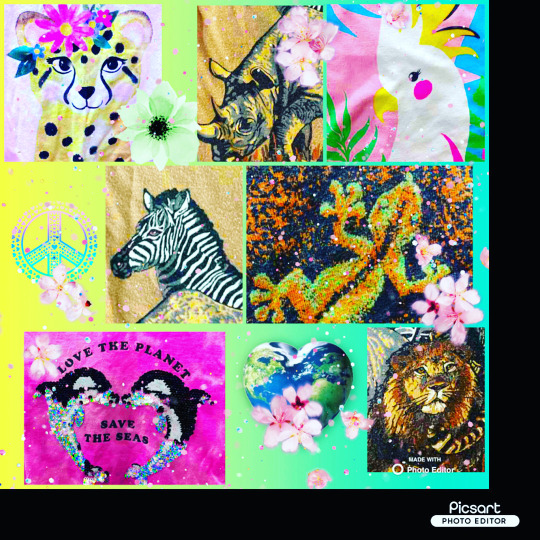

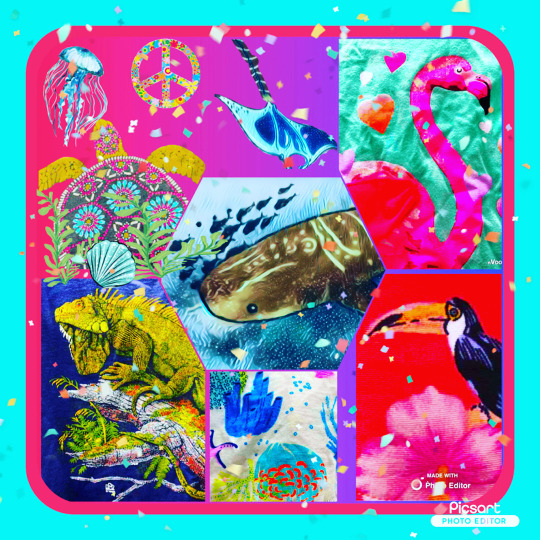
Been behind on posting but here I thought you guys may like this: the 4 newest wildlife conservation digit projects I made for displaying awareness of keeping the worlds 🌎 animals safe and to promote no poaching.
0 notes
Text

"Save our wildlife before it's too late"
This ad is a banger!
11K notes
·
View notes
Text
Remind me to never identify birds for my grandmother ever again she is impossible to work with I KNEW IT WAS A GOLDEN CROWNED KINGLET BUT NOOOOO tHe BiRd In ThE pIcTuRe IsNt WhItE eNoUgH IT LOOKS EXACTLY THE SAME BUT JN DIFFERENT LIGHTING
#im fine. im good. doing good#i love our fish and wildlife website animal registry things....and eBird... lovely website the only saving grace of the last like half hour#grandmas on thin ice tho
0 notes
Text
World Wildlife Day : Things to know

March 3 is observed as World Wildlife Day for conservation of endangered animals and plants. this year marks the 50th anniversary of the Convention on International Trade in Endangered Species of Wild Fauna and Flora (CITES) in 1973. Read More -
#wildlife photography#world wildlife day#world wildlife fund#wild animals#save our planet#endangered species
0 notes
Text

Recently there was a patch of trees felled without warning.
It's nesting season, so it's very dangerous for the birds to destroy their trees. I've already seen woodpigeons mating in the nearby area about a month ago. I've seen birds such as woodpigeons, magpies, great tits, blue tits and a sparrowhawk in the area that's been felled (as well as robins, long-tailed tits, coal tits, blackbirds, goldfinches and house sparrows nearby). I have also heard a Jay nearby before, and one Facebook commenter has said there are nesting Jays. Additionally, it looks horrible - there used to be beautiful trees, and now there's just a thin strip of trees along the footpath, as well as a horrid big hole next to the car park. Our green spaces need more protection.
According to two councillor's Facebook posts, the Forestry Commission are investigating due to no felling licence or planning permission. They have served a Stop Notice. The matter has been raised with the wildlife crime team due to disturbance to nesting birds. The area has been allocated for development, but the felling has had insufficient regard for the environmental impact.
Developers will often illegally fell trees, then take the fine and build houses since it's already been destroyed. However, they could now be issued a restocking order, and would have to replant the trees.
I've seen two messages on the gate to the site protesting this, so I made this piece. If there's public uproar it could hopefully make them think twice next time, even if it doesn't save this one.
#robin#robin redbreast#european robin#erithacus rubecula#erithacus#muscicapidae#passeriformes#bird#birds#birb#deforestation#save the trees#environment#art#painting#traditional art#artists on tumblr#bird art#wauk wauk
428 notes
·
View notes
Text
Humanity has finally found a way to communicate with crabs, we realize they're smarter than us. Now that they know we know, what are they going to do?
*~*~*
🌐 CHANNEL 12 NEWS 🌐
“This just in! Scientist have successfully communicated with sea life, and they are much smarter than ever expected. No not dolphins or whales, but crabs. And these crustaceans have much to say about our way of life. We’re jumping on the scene with Triton Gaiah, Triton?”
“That’s right, talking crabs! And now they we can hear them they’re making sure we listen. Just two weeks after making first conversation with this hard shell creatures they have set demands with scientists. But what could they want?
What if I told you it was to advocate, but not just for the end of the crab genocide but for the end of ocean destruction as well. Scientist and congress alike have been informed that these snappy crabs have rallied guard sharks, alerted the high dolphin council, and even contacting the big guns. You guessed it, the cephalopods.
Tune in live this Wednesday as we witness the historical first meeting with Oceanus 7, a collective formulated throughout every ocean and allied with a few human organizations, from Oceana to Peta. And with echo communication there’s no surprise how fast word can travel through the ocean.
This has been Triton Gaiah with Channel 12 News.”
#satt-prompt#show and tell time#satt-crabs#satt-writing-prompt#show and tell#satt#savetheplanet#save the ocean#protectourplanet#protect our oceans#protect our wildlife
0 notes
Text

The Hog Deer: A symbol of hope for the future.
source
1 note
·
View note